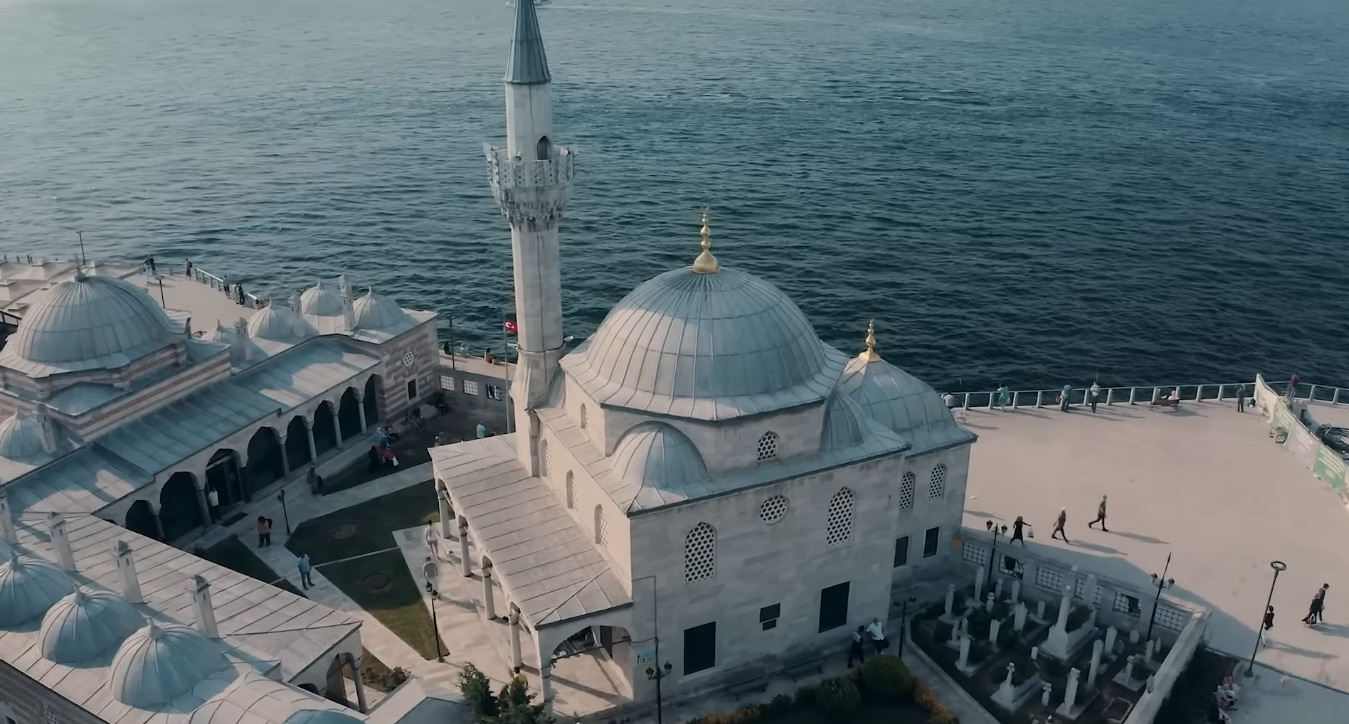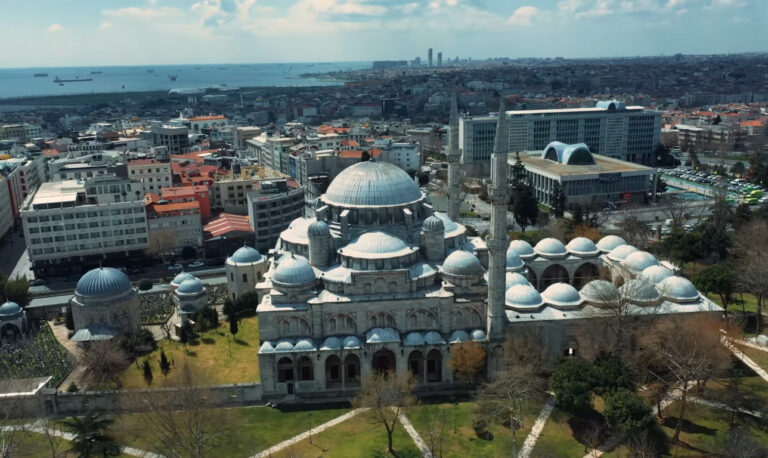Şemsipaşa Mosque
The Şemsi Paşa Complex, located in Üsküdar, Istanbul, is a small but historically significant complex built by the renowned architect Mimar Sinan in 1580. It was commissioned by the former Governor of Damascus, Vezir Şemsi Ahmed Pasha. The complex comprises a mosque, a madrasa (Dârülhadis), and a tomb.
Key Information about Şemsi Paşa Complex:
- Historical Background:
- The complex suffered considerable damage in the earthquake of 1894 and underwent subsequent repairs in the following year.
- During the Republic period, the complex reached a state of disrepair, with the mosque’s minaret partially collapsed and the domes of both the mosque and madrasa cracked. It was later restored between 1940-1943, following an order by Mustafa Kemal Atatürk.
- In 2007-2008, the leaning minaret facing the sea was repaired to match its original form.
- Architecture and Layout:
- The complex is constructed from cut stone and is enclosed within a wall with iron-grilled windows.
- The mosque, measuring 8×8 meters, is square-plan with a single dome and is entirely made of cut stone.
- A son cemaat area (last congregation area) with a flat roof supported by ten slender columns encircles the north and west facades.
- The mosque features a single, elegant minaret at its western corner.
- The dome of the mosque is 8.20 meters in diameter, with two rows of windows providing illumination.
- The interior is decorated with colorful frescoes and calligraphy by İsmail Hakkı Altunbezer.
- Tomb of Şemsi Ahmed Pasha:
- The tomb, attached to the northeast side of the mosque, measures 4.5×4 meters and is covered with a mirrored vault.
- The tomb features a decorative iron grill that separates it from the mosque, and it houses the sarcophagus of Şemsi Ahmed Pasha.
- Madrasa (Dârülhadis):
- The madrasa forms an “L” shape along the western and southern sides of the inner courtyard.
- It consists of a central lecture hall (dershane) measuring 7×7 meters with a high-domed ceiling, surrounded by twelve square-plan cells, each covered with a dome.
- The madrasa has been used as a public library since 1953.
- Cultural and Artistic Significance:
- Known colloquially as the “Birdless Mosque” due to its design that seemingly prevents birds from perching, the Şemsi Paşa Mosque is celebrated for its elegant and harmonious proportions, despite the asymmetrical plan of the complex.
- Recent Developments and Current Use:
- The complex underwent restoration to address issues related to its structural integrity and aesthetic preservation.
The Şemsi Paşa Complex, with its mosque, madrasa, and tomb, remains a fine example of Ottoman architecture from the 16th century, showcasing Mimar Sinan’s expertise in creating structures of enduring beauty and significance.



